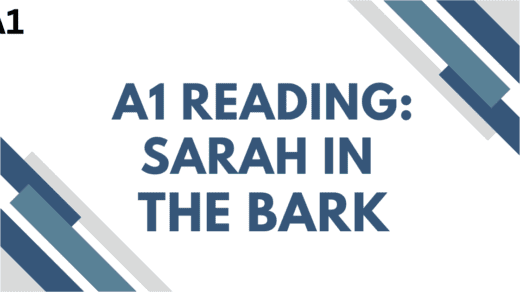Mastering Your Daily Routine
This lesson is all about discussing daily routines in English! Whether you’re a beginner or looking to enhance your language skills, understanding how to express your daily routine can enhance your conversational abilities. This lesson will cover essential vocabulary, sentence structures, practice activities, and tips to help you confidently talk about your daily routine.
Understanding Daily Routine
A daily routine is a series of actions or tasks that are regularly performed each day. These can include waking up, personal hygiene, meals, work or school activities, leisure activities, and bedtime. Discussing your daily routine helps you practice your English skills in real-life contexts and gain fluency in everyday conversations.
Daily Routine Essential Vocabulary
Before diving into speaking and writing about your routine, let’s start with some essential vocabulary. Familiarize yourself with the following terms and phrases related to daily routines:
Morning Routine
- Wake up: to rise from sleep
- Get out of bed: to leave your bed
- Brush teeth: cleaning your teeth with a toothbrush
- Take a shower: Use water to clean your body
- Have breakfast: the first meal of the day
- Put on clothes: to dress yourself
- Wash face, Drink water or coffee, Check the weather, Read the news, Prepare for the day…
Daytime Activities
- Go to work/school: traveling to your place of employment or education
- Attend meetings: participating in discussions or gatherings at work
- Study: learning or reviewing material
- Take breaks: short rest periods during work or study
- Run errands: doing necessary tasks like shopping, banking, etc.
- Complete assignments or tasks, Have lunch, Go for a walk or exercise, Prepare for dinner…
Evening Routine
- Have dinner: the evening meal
- Spend time with family/friends: being social with loved ones
- Watch TV: viewing television programs or movies
- Read a book: engaging with written literature
- Go to bed: the final act of sleeping for the night
Structuring Your Daily Routine
Let’s break down how you can structure sentences when describing your daily routine. A useful formula is:
Subject + Verb + Object + Additional Information
Example Sentences
- I wake up at 7 a.m.
- After that, I brush my teeth and take a shower.
- Then, I have breakfast with my family.
- At 8:00 a.m., I leave for work/school.
- In the evening, I usually watch TV or read a book before bed.
Talking About Frequency
To add variety to your sentences, use adverbs of frequency. Here are common adverbs you can use:
- Always: 100%
- Usually: 80%
- Often: 60%
- Sometimes: 40%
- Rarely: 20%
- Never: 0%
Example Usage
- I usually wake up at 7 a.m.
- I often have coffee for breakfast.
- I sometimes exercise after work.
- I rarely play sport
A daily routine can vary widely depending on individual preferences and responsibilities, but here are a few examples:
- Standard Workday Routine: Wake up at 6:30 AM, exercise for 30 minutes, shower and breakfast by 7:30 AM, commute to work by 8:00 AM, work from 9:00 AM to 5:00 PM with a lunch break, return home, cook dinner, spend time with family, and read or relax before bed at 10:30 PM.
- Student Routine: Rise at 7:00 AM, review notes for 30 minutes, attend classes from 8:30 AM to 3:00 PM, participate in extracurricular activities, study or do homework in the evening, play video games or hang out with friends, and wind down before sleeping at 11:00 PM.
- Stay-at-Home Parent Routine: Get up at 6:00 AM, prepare breakfast for family, engage kids in activities or learning, run errands or grocery shop, prepare lunch, have quiet time or nap while kids nap, prepare dinner, family time in the evening, and bedtime routine by 9:00 PM.
Each routine can be adjusted based on your personal goals and life circumstances.
Putting It All Together: A Sample Routine
To illustrate how to combine all this information, here’s a sample description of a daily routine.
Sample Daily Routine
“I always wake up at 6:30 a.m. After I get out of bed, I brush my teeth and take a shower. Then, I have breakfast at 7:00 a.m. I leave for work at 7:45 a.m. and arrive by 8:15 a.m. I usually spend my day in meetings and working on projects. At 5:00 p.m., I head home. I often cook dinner in the evening and spend time with my family. We sometimes watch a movie together. Finally, I go to bed around 10:30 p.m.”
Questions related to daily routines
Here are some questions related to daily routines in English with simple answers:
- What do you usually eat for breakfast?
- I usually eat cereal.
- Do you exercise in the morning or evening?
- I exercise in the evening.
- At what time do you wake up?
- I wake up at 7 am.
- Do you have a daily routine?
- Yes, I do have a daily routine.
- What do you do after waking up?
- I brush my teeth and take a shower.
- Do you use a planner or app to organize your day?
- I use a planner to organize my day.
- At what time do you go to bed?
- I go to bed at 11 pm.
- Do you do any hobbies in the morning?
- No, I do not do any hobbies in the morning.
- Do you have a morning or evening routine?
- I have a morning routine.
- Do you take a lunch break?
- Yes, I take a lunch break.
Sample dialogue for practicing daily routine
Morning Routine:
Emily: “Good morning, Alex! Did you set your alarm?”
Alex: “Yeah, I did. I just hit snooze a couple of times. What’s for breakfast?”
Emily: “I made scrambled eggs and toast. Eat up so we can leave by 7:30!”
Alex: “Sounds good! I still need to pack my lunch.”
Afternoon Routine:
Emily: “How was school today?”
Alex: “Pretty good! We had a surprise pop quiz, though. Luckily, I studied.”
Emily: “Nice! Want to do homework together after a snack?”
Evening Routine:
Alex: “Dinner smells amazing! What’s cooking?”
Emily: “Just some pasta and salad. Did you finish your homework?”
Alex: “Almost done! Can I help set the table?”
Emily: “Sure! Thanks! Then we can watch that show we like after dinner.”
Here’s a structured daily routine for speaking practice:
- Topic Selection (5 minutes): Choose a specific topic or theme for your practice (e.g., current events, personal experiences).
- Preparation (10 minutes): Spend a few minutes jotting down key points or phrases related to your topic to guide your speaking.
- Speaking Practice (10-15 minutes): Speak aloud about your chosen topic, focusing on clarity and fluency. Record yourself if possible for later review.
- Feedback and Reflection (5-10 minutes): Listen to your recording and note areas for improvement, such as pronunciation or pace.
- Interactive Practice (10-15 minutes): Engage in conversation with a language partner, or tutor, or through a language exchange app to apply your skills in real time.
- End-of-Day Review (5 minutes): Reflect on your learning and set goals for the next day’s practice.
Conclusion
Mastering the art of discussing daily routines in English is a fundamental skill that can enhance your communication abilities. With practice, vocabulary, and structured sentences, you’ll be able to articulate your routine confidently. Remember, the key to fluency is consistent practice, so keep talking about your daily life in English!




